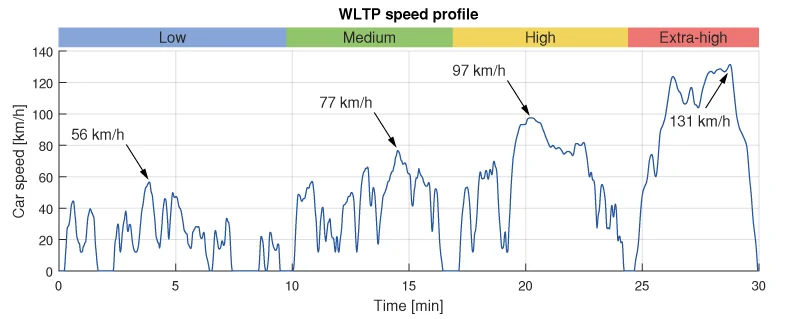- First Name
- peter
- Joined
- Dec 23, 2024
- Threads
- 12
- Messages
- 477
- Reaction score
- 405
- Location
- Austria
- Vehicles
- Macan Turbo EV, 911 limited, Mustang V8 1967, GMC Gran Sierra 1971, Smart Brabus
this is not how wltp works. google helpsActually it's 7% but this is irrelevant as the WLTP test average speed is 46 km/h and the OP is doing 300 km stints at 140-150 km/h motorway speeds which means his average speed will be over 100 km/h or over twice the speed of the test. Consumption is not linear so any calculations based off WLTP will be inaccurate.
There is no magic in the 2025 models, just smaller/different rims/tyres/pressures/spec/weather conditions/driving style/etc.
While tyre compound, pressure, size, wear, etc. make a difference, wind especially rain make the biggest difference, plus weight (more equipment - heavier). Of course as with all cars biggest difference will be your right foot.
I also drove a 4 loaner, same suspension/wheels as my 4S. It was over 20% more efficient, going off the WLTP figure the difference between the 2 models is negligible, which shows how a test run inside a lab using specific, completely unrealistic conditions has nothing to do with real world driving.
If you are interested in real tests head over to youtube and check the excel file of Bjorn Nyland, Macan 4 on 22s at 120 km/h, consumption 27 kWh/km, range 350 km (I have rounded the figures).
This then gives the ill-informed ICE crowd a chance to cry about EVS how crap they are when "advertised range" is 613 km and you get 280 km (80% charge of 350 km).
Try explaining to them that a lab test with 46 km/h average speed at 23 deg C has no relevance to daily driving.
For anyone interested in the results but can't bothered to check consumption at this speed for efficient cars like Tesla M3 RWD Highland on 18s is ~15.5 kWh/km, SUVs on 22s range from 26 to 32 kWh/km for Chinese behemoths (E-HS9).
Sponsored

